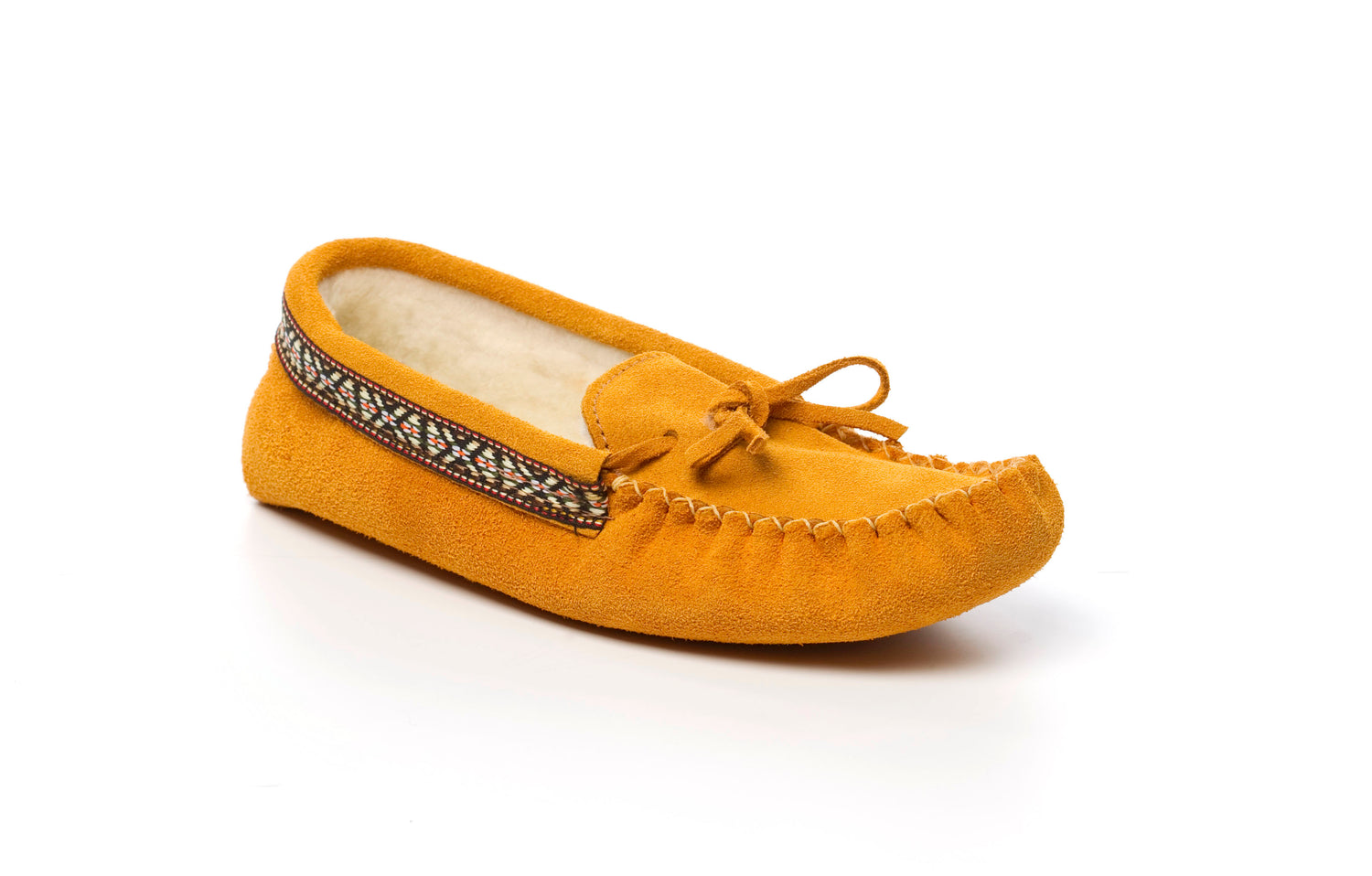
Stepping Through History: A Guide to the Different Types of Moccasins
Share
Stepping Through History: A Guide to the Different Types of Moccasins
Moccasins, those soft, supple shoes that have graced the feet of cultures worldwide, are far from a monolithic entity. Their history is rich, their designs varied, and their purposes diverse. From the traditional footwear of Indigenous peoples in North America to the modern driving moccasins favored by contemporary style enthusiasts, the moccasin's journey is a testament to its enduring comfort and practicality.
A Foundation in Tradition: Indigenous Moccasins
The true origins of the moccasin lie with the Indigenous peoples of North America. These weren't just shoes; they were an essential part of life, adapted to the specific terrains and climates of different regions.
-
Plains Moccasins:
-
Characterized by a hard sole and soft upper, these moccasins were ideal for the vast, open plains.
-
Often heavily decorated with intricate beadwork, quillwork, and fringe, reflecting the artistry and cultural identity of the tribes.
-
The hard sole provided protection against the rough terrain, while the soft upper offered flexibility and comfort.
-
Characterized by a hard sole and soft upper, these moccasins were ideal for the vast, open plains.
-
Woodlands Moccasins:
-
Typically featured a soft sole and a gathered or puckered toe seam.
-
Adapted for the forested environments, these moccasins were lightweight and flexible, allowing for quiet movement through the woods.
- Decoration varied, but often included geometric patterns and floral designs.
-
Typically featured a soft sole and a gathered or puckered toe seam.
-
Subarctic Moccasins:
- Designed for extreme cold, these moccasins were often made with multiple layers of materials, including fur and leather.
- They were often taller, providing extra warmth and protection for the ankles and lower legs.
- Functionality was paramount, with less emphasis on elaborate decoration.
Beyond Tradition: Modern Moccasin Variations
While Indigenous moccasins remain a vital part of cultural heritage, the moccasin's design has evolved to meet the needs of contemporary lifestyles.
-
Driving Moccasins:
- Designed for driving, these moccasins feature a soft, flexible upper and a rubber sole with small nubs or treads for grip.
- They offer excellent pedal feel and comfort, making them a popular choice for drivers.
- Often crafted from soft leather or suede, they come in a variety of stylish colors and designs.
-
Slipper Moccasins:
- Designed for indoor comfort, these moccasins are typically made with soft materials like suede, sheepskin, or fleece.
- They often feature a soft sole or a thin rubber sole for light traction.
- Perfect for lounging at home, they provide warmth and comfort for tired feet.
-
Hard Sole Moccasins:
- These moccasins have a stiff sole, that can be made of rubber, or leather.
- They are good for outdoor use, and offer more protection than a soft soled moccasin.
-
Soft Sole Moccasins:
- These moccasins have a very soft sole, and are best used indoors. They are very comfortable.
Materials and Craftsmanship
The materials used in moccasins vary depending on the type and purpose.
-
Leather: A classic material, leather moccasins offer durability, flexibility, and a timeless aesthetic.
- Suede: Known for its soft, velvety texture, suede moccasins provide a luxurious feel.
-
Sheepskin: Ideal for warmth and comfort, sheepskin moccasins are perfect for cold climates.
- Fleece: A soft, synthetic material, fleece moccasins offer cozy comfort at an affordable price.
The Enduring Appeal of Moccasins
From their traditional roots to their modern adaptations, moccasins have remained a beloved footwear choice for centuries. Their comfort, versatility, and timeless style continue to captivate people around the world. Whether you're seeking a piece of cultural heritage, a comfortable slipper, or a stylish driving shoe, there's a type of moccasin to suit your needs.
I hope this in-depth article has been helpful!



